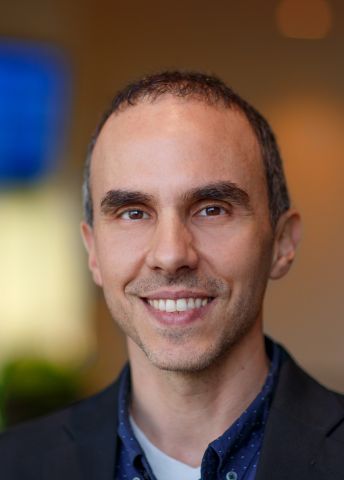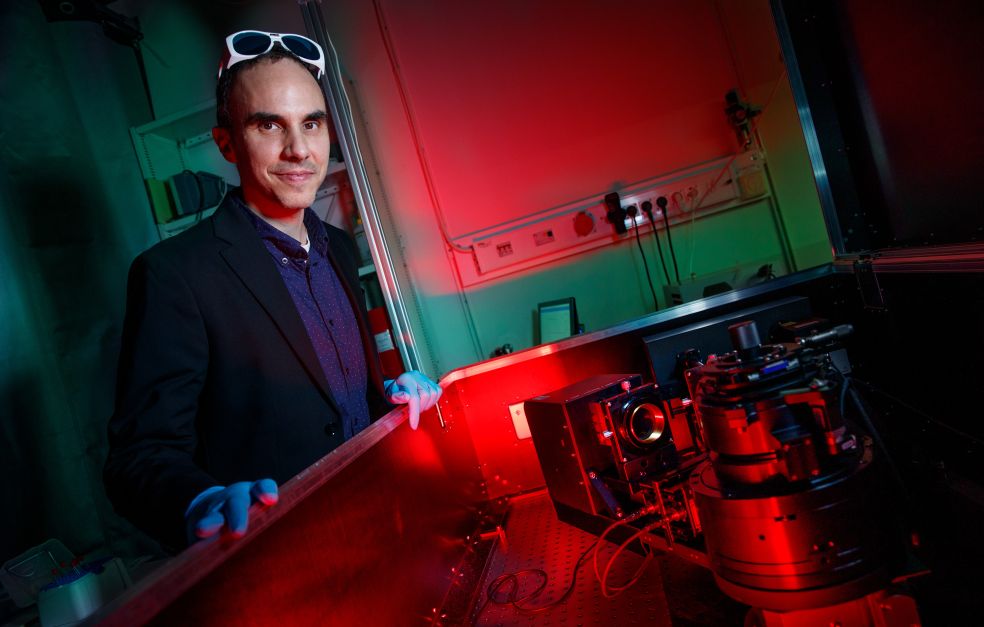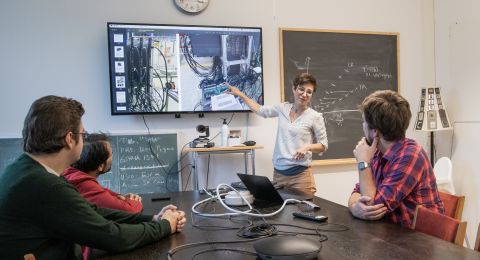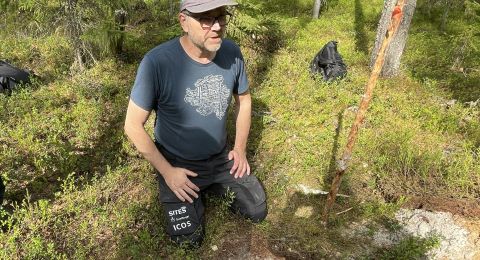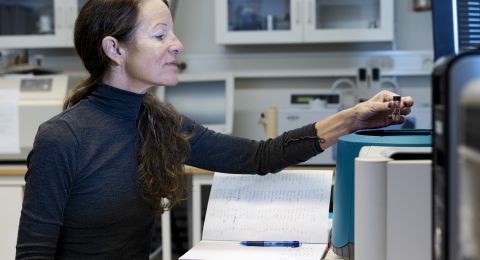Countless proteins and enzymes jostle with other molecules inside our cells. Small membraneless droplets form in this crowded environment. Their function is still unknown, but they may play a part in diseases such as Alzheimer’s and Parkinson’s. Wallenberg Academy Fellow Foivos Perakis is studying how these droplets are formed.
Foivos Perakis
PhD in Physical Chemistry
Wallenberg Academy Fellow 2023
Institution:
Stockholm University
Research field:
Studies of dynamic properties of concentrated protein solutions and mixtures to understand cellular mechanisms
Different parts of our cells have distinct tasks. These parts, called organelles, may be compared to the organs in our bodies. A myriad of molecules move between them.
It was formerly believed that molecules floated independently. However, researchers have recently discovered that the crowding in the cell creates membraneless droplets within the cytoplasm – the gelatinous fluid where all organelles float.
Perakis wants to ascertain how these molecular droplets are formed and their potential function in cellular processes. The methods he is using stem from his fascination with water.
The mysteries of water
He grew up in Athens, Greece, and received his PhD at the University of Zurich in Switzerland. The original topic of his doctoral thesis was intended to be solar cells, but after a collaboration fell through, his supervisor suggested he take a closer look at water instead.
“There is still much we don’t understand about water. There are nearly 200 differences between water and other liquids. Most of these relate to how molecules bond with each other and the structure of the resulting networks,” says Perakis.
As a doctoral student, he used vibrational spectroscopic to examine these bonds more closely. However, to map the molecular structure, he needed access to free-electron lasers – a type of X-ray technology allowing the study of material structures at atomic level.
This led him to move to SLAC National Accelerator Laboratory in California in the U.S., where he developed new methods to combine results from different techniques. He is now using these methods to study the formation of membraneless droplets in our cells, focusing on the role played by water.
“Water molecules can play an active role in forming and breaking up the membraneless droplets or condensate. But this is still an open question that has not been much researched,” he says.
To study how the droplets are formed, his research team has developed miniature “reactors” that can induce droplet formation. The team has already made some preliminary findings showing there to be two ways that the droplets can form.
Greek Weddings
One way resembles traditional dancing at a Greek wedding: initially, a couple begins dancing hand-in-hand, but soon more guests join in to form an ever-expanding circle.
“We see something similar in the formation of droplets: a few molecules initiate the process, and soon a large number of proteins gather in a single condensate.”
The second kind of droplet formation they observed is that everything happens suddenly, like flipping a switch.
“We’re now trying to understand what drives these different processes and, in particular, what happens when the condensates solidify.”
When I was young my dad encouraged me to follow my natural curiosity to understand the mechanism behind various phenomena and figure out how things work.
In Parkinson’s and Alzheimer’s, amyloid plaques form in the brain. They consist of clumps of a certain protein that has solidified. Cataracts are also caused by clumps of protein that cloud the eye lens. It is hoped that greater knowledge of droplet formation in the cells may provide more clues as to why these condensates form.
The research is possible thanks to X-ray technologies available at the MAX IV facility in Lund and the European XFEL in Hamburg, Germany. One problem, however, is that the strong beam of the free electron laser can damage the water molecules.
“This is a major problem when sensitive biomolecules are involved. And the laser beam also breaks down the water molecules in a way we don’t yet understand. But we have made some progress that enables us to predict how intense a beam we can use without damaging the samples.”
Sharpening research focus
Increased knowledge of membraneless droplet formation could also be used to develop protein-based drugs and biosensors. With a better understanding of how proteins and molecules move within cells, it could become possible to control actual drug delivery.
“If you know where a particular molecule is going, you can equip it with a protein-based drug that will reach the correct place in the cell.”
Perakis’ field of physical chemistry already combines several scientific disciplines, and he welcomes further collaborations, not least in the medical field. Although his current work is basic research, he envisions a future with more applied research.
“One of my goals over the next five years is to move toward industrial applications. The Wallenberg Academy Fellow grant will be instrumental in this, helping me to sharpen my research focus.”
He particularly emphasizes the meetings and networks facilitated by the grant.
“It provides a fantastic opportunity to meet many people from entirely different fields.”
Text Magnus Trogen Pahlén
Translation Maxwell Arding
Photo Magnus Bergström
